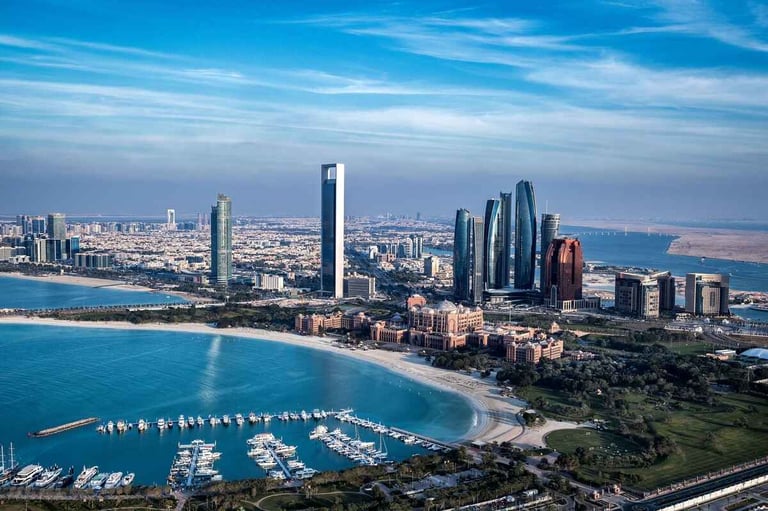The annual inflation rate in Saudi Arabia remained stable at 2.3 percent in June 2025 compared to the same month of the previous year. According to the General Authority for Statistics (GASTAT), the Consumer Price Index (CPI) also maintained its steadiness at 0.2 percent in June 2025 when compared to May 2025, on a monthly basis. Similarly, the Wholesale Price Index (WPI) recorded relative stability at 2.1 percent in June 2025 compared to the same month last year. However, the WPI decreased by 0.1 percent in June 2025 compared to May 2025.
According to GASTAT, the CPI reflects price changes paid by consumers for a fixed basket of 490 goods and services. This basket was selected based on the results of the 2018 Household Income and Expenditure Survey. Prices are collected through field visits to points of sale, and the CPI statistics are published monthly.
Non-oil private sector conditions strengthen in June
Saudi Arabian non-oil private sector business conditions strengthened in June, according to the latest PMI® survey data, as client demand rose markedly and output expanded. Increased volumes of new work spurred an acceleration in hiring activity, resulting in the sharpest rise in employment levels since May 2011. This surge in demand for staff contributed to a record increase in wage costs, which added to overall cost pressures and led to a renewed rise in output prices.
The headline figure is the seasonally adjusted Riyad Bank Saudi Arabia Purchasing Managers’ Index™ (PMI). The PMI is a weighted average of five indices. New Orders account for 30 percent. Output makes up 25 percent. Employment represents 20 percent. Suppliers’ Delivery Times contribute 15 percent, and Stocks of Purchases account for 10 percent. For the PMI calculation, the Suppliers’ Delivery Times Index is inverted so that it moves in a comparable direction to the other indices.
The headline PMI rose from 55.8 in May to a three-month high of 57.2 in June, indicating a stronger improvement in the health of the non-oil private sector economy. The index was slightly above its long-run average of 56.9. Non-oil companies reported a further rise in new orders in June, with the rate of growth continuing to accelerate from its recent low in April. Surveyed firms frequently noted the acquisition of new clients. They also mentioned the benefits of enhanced marketing and improved demand conditions. Domestic sales were the primary driver of this upturn. Meanwhile, sales to foreign clients increased only slightly.
Trade surplus exceeds SAR2 billion in April 2025
The non-oil trade surplus of Saudi Arabia with the Gulf Cooperation Council (GCC) countries saw an annual growth rate of 203.2 percent. This surplus exceeded SAR2 billion, equivalent to $533.26 million, in April. It surged to approximately SAR3,511 million from SAR1,158 million in the same month last year.
According to preliminary data from the International Trade Bulletin for April, published by GASTAT, the total volume of non-oil trade reached around SAR18,028 million. This includes re-exports between Saudi Arabia and GCC countries. The figure translates to approximately SAR18.028 billion. This represents a year-on-year growth of 41.3 percent, reflecting an increase of SAR5,271 million from SAR12,757 million in April 2024.
Non-oil commodity exports, including re-exports, rose by 55 percent, totaling SAR10,770 million, up from SAR6,958 million in April of the previous year, marking an increase of over SAR3,812 million, as reported by the Saudi Press Agency (SPA) citing the GASTAT figures. Meanwhile, the value of national non-oil commodity exports reached around SAR3,031 million, compared to SAR2,675 million in April 2024, achieving a year-on-year growth rate of 13.3 percent, with an estimated increase of SAR356 million. Additionally, the value of re-exports surged by 81 percent, reaching SAR7,738 million (SAR7.738 billion) compared to SAR4,282 million, representing an increase of SAR3,456 million.
Saudi Arabia’s imports from GCC countries stood at SAR7,258 million in April 2025. This is compared to SAR5,799 million last year. The year-on-year growth reached 25.2 percent, with an increase of SAR1,459 million. The data indicated that the United Arab Emirates ranked first in non-oil trade volume with Saudi Arabia. The trade volume amounted to SAR13,533 million. This represents about 75.1 percent of the total. Bahrain followed in second place with a trade value of SAR1,798 million, which is 10 percent. Oman ranked third with SAR1,454 million, accounting for 8.1 percent. Kuwait was fourth with SAR819.9 million, representing 4.5 percent. Qatar came next with a trade value of SAR422.1 million, or 2.3 percent.








